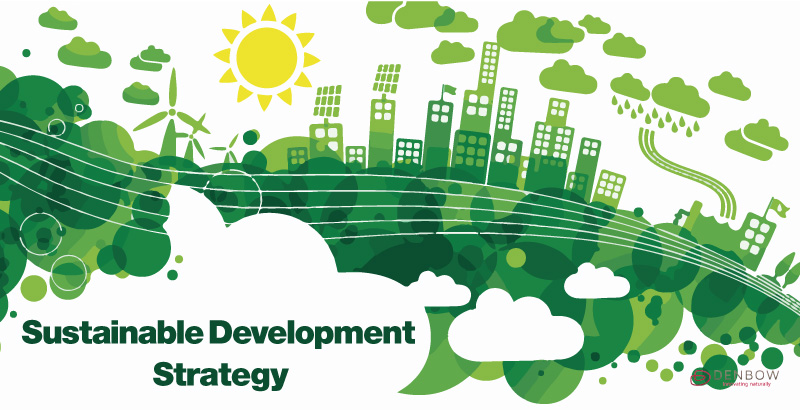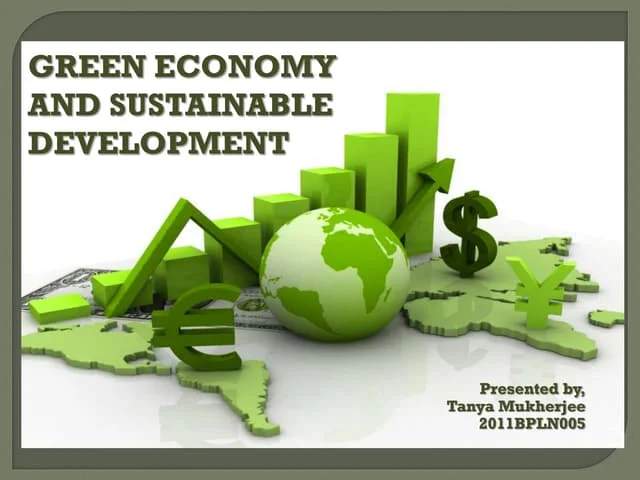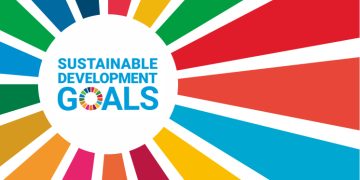Introduction: Understanding Sustainable Development
In the 21st century, the concept of sustainable development has shifted from a niche environmental concern to a global imperative. Defined by the United Nations in 1987 as “development that meets the needs of the present without compromising the ability of future generations to meet their own needs,” sustainable development integrates economic growth, social equity, and environmental protection.
The challenges of the modern world — climate change, resource depletion, rising inequality, and rapid urbanization — demand solutions that are both effective and long-term. Governments, businesses, and individuals must work collaboratively to achieve a balance that allows prosperity while safeguarding the planet.
This article explores the multi-dimensional aspects of sustainable development, global initiatives, success stories, challenges, and the path forward.
1. Economic Dimension: Building a Green and Resilient Economy
1.1 The Shift Toward Green Economy
Traditional economic growth has often relied on the extensive consumption of natural resources, leading to environmental degradation. A green economy reimagines development by integrating ecological sustainability into economic planning. Key principles include:
- Promoting renewable energy and energy efficiency
- Reducing greenhouse gas emissions
- Encouraging sustainable agriculture and forestry
Countries investing in green technologies not only reduce environmental impact but also create new employment opportunities. For example, the solar and wind sectors have seen exponential job growth in Europe and Asia over the past decade.
1.2 Circular Economy: Closing the Loop
The linear “take-make-dispose” model is increasingly unsustainable. A circular economy emphasizes:
- Resource efficiency and waste minimization
- Product lifecycle extension through repair, reuse, and recycling
- Industrial symbiosis where one industry’s waste becomes another’s input
Businesses adopting circular strategies benefit from cost savings, reduced environmental risk, and improved consumer loyalty.
1.3 Sustainable Investment
Investors are increasingly aligning with Environmental, Social, and Governance (ESG) criteria. Sustainable finance channels capital toward:
- Renewable energy projects
- Clean transportation
- Water and waste management innovations
Global sustainable investment reached over $40 trillion in 2023, highlighting the economic viability of environmentally conscious choices.
2. Social Dimension: Fostering Equity and Well-Being
2.1 Education for Sustainable Development
Education is a cornerstone of sustainable development. It empowers communities to make informed decisions about resource use, health, and social responsibility. Integrating sustainability into curricula ensures:
- Awareness of global environmental challenges
- Skills for green jobs and innovation
- Development of responsible citizenship
Programs such as UNESCO’s Global Action Programme on Education for Sustainable Development (GAP ESD) exemplify global commitment.
2.2 Health and Social Equity
Sustainable development is intrinsically linked to public health and equity. Policies promoting clean air, safe water, and nutritious food reduce disease burden. Access to healthcare, gender equality, and social inclusion strengthens social resilience, enabling communities to thrive alongside economic and environmental progress.
2.3 Community Engagement and Participation
Local communities are essential actors in sustainability. Grassroots movements, participatory planning, and citizen-driven initiatives foster ownership, enhance compliance with regulations, and promote cultural sensitivity in environmental actions.
3. Environmental Dimension: Protecting the Planet
3.1 Climate Change and Carbon Management
Global warming remains the most pressing environmental challenge. Sustainable strategies focus on:
- Renewable energy adoption (solar, wind, hydro, biomass)
- Energy efficiency across industries and households
- Carbon pricing and trading schemes to incentivize emission reductions
Cities like Copenhagen and Singapore have implemented comprehensive climate strategies, combining renewable energy, public transport, and green infrastructure to lower carbon footprints.
3.2 Biodiversity and Ecosystem Conservation
Healthy ecosystems are critical for human survival. Conserving forests, wetlands, and marine environments:
- Maintains biodiversity and ecological balance
- Supports food security and water purification
- Reduces vulnerability to natural disasters
Initiatives like the Convention on Biological Diversity (CBD) set global targets for habitat protection, species preservation, and sustainable land management.
3.3 Sustainable Resource Management
Water scarcity, deforestation, and soil degradation pose major threats. Sustainable management practices include:
- Integrated water resource management (IWRM)
- Agroforestry and regenerative agriculture
- Responsible mining and extraction practices
Technology, such as precision irrigation, remote sensing, and AI-driven monitoring, enhances efficiency and reduces waste.

4. Global Case Studies and Best Practices
4.1 Europe: Renewable Energy Leadership
Countries like Germany, Denmark, and Sweden have demonstrated the feasibility of large-scale renewable energy deployment:
- Germany’s Energiewende policy targets 80% renewable electricity by 2030
- Denmark sources over 50% of its electricity from wind turbines
- Sweden integrates renewable energy with social welfare programs for inclusive growth
4.2 Asia: Balancing Growth and Sustainability
China, India, and Japan face challenges of rapid urbanization and industrialization:
- China has invested heavily in solar and wind, aiming for carbon neutrality by 2060
- Japan focuses on energy efficiency and smart cities post-Fukushima
- India promotes solar parks and electric mobility, balancing growth with environmental stewardship
4.3 Africa: Community-Based Approaches
African nations leverage community-driven sustainable practices:
- Kenya’s solar microgrids expand energy access in rural areas
- Agroecology and water harvesting techniques enhance food security
- Local governance ensures cultural alignment with sustainability projects
5. Challenges to Sustainable Development
Despite progress, several obstacles remain:
- Policy fragmentation: Lack of coordination between governments and sectors
- Financial constraints: Limited funding for sustainable infrastructure in developing regions
- Technological gaps: Access to clean technology remains unequal
- Cultural and behavioral barriers: Resistance to change and short-term thinking
Addressing these requires international cooperation, multi-stakeholder engagement, and long-term planning.
6. Innovations Driving Sustainability
6.1 Smart Cities and Digital Technologies
Urban areas leverage IoT, AI, and big data to optimize energy use, reduce emissions, and manage waste efficiently. Examples include:
- Smart traffic management to reduce congestion
- Sensor-driven energy monitoring in buildings
- Data analytics for predictive maintenance and resource allocation
6.2 Renewable Energy and Storage
- Advanced battery storage stabilizes renewable energy supply
- Distributed generation reduces grid dependency
- Hydrogen fuel cells provide clean alternatives for transport and industry
6.3 Circular Economy in Practice
Innovative startups and corporations implement circular practices:
- Biodegradable packaging replaces single-use plastics
- Waste-to-energy projects convert organic waste into electricity
- Material recycling in fashion and electronics reduces resource extraction
7. Global Cooperation and Policy Frameworks
Sustainable development is inherently transnational. Collaborative frameworks include:
- United Nations 2030 Agenda and Sustainable Development Goals (SDGs)
- Paris Climate Agreement for carbon mitigation
- Regional partnerships like the European Green Deal
Policies must incentivize private investment, technology transfer, and knowledge sharing to achieve scalable and equitable impact.
8. The Role of Individuals
While governments and corporations play key roles, individual actions are equally important:
- Reducing energy consumption and waste
- Choosing sustainable products and mobility options
- Supporting local and global environmental initiatives
Behavioral change, when scaled, contributes significantly to societal transformation and cultural shifts toward sustainability.
9. The Future Path
Sustainable development in the 21st century is dynamic, multi-dimensional, and inclusive. Key priorities for the coming decades:
- Strengthen international cooperation and enforceable agreements
- Integrate sustainability into economic policies and corporate strategies
- Harness technology while ensuring equity and accessibility
- Cultivate social awareness, education, and cultural adaptation
The trajectory of global development depends on our collective ability to balance economic growth, social equity, and environmental preservation.
Conclusion: Toward a Balanced Future
Sustainable development is not a choice; it is a necessity. Achieving it requires a holistic approach that unites economic, social, and environmental priorities. The integration of technology, policy innovation, global cooperation, and individual responsibility forms the foundation for a resilient and equitable world.
In the 21st century, the path to sustainability is a journey, not a destination. Only by aligning human ambition with planetary limits can we ensure that future generations inherit a world rich in resources, opportunity, and hope.












































